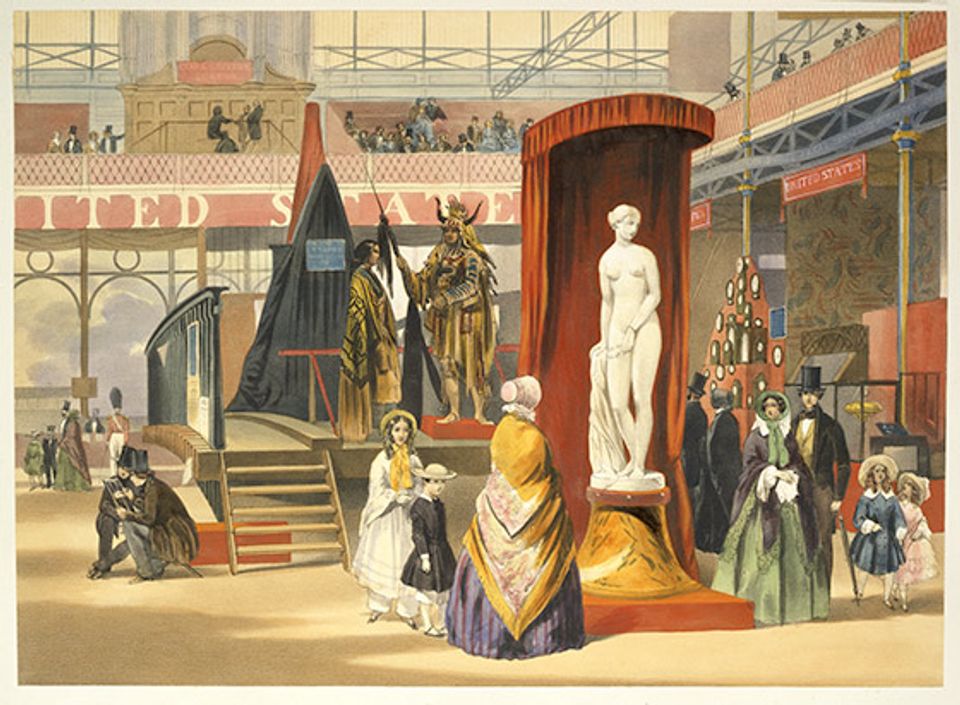
Karen Lemmey, SAAM's sculpture curator, has organized an installation entitled Measured Perfection: Hiram Powers' Greek Slave. Powers' Greek Slave was one of the most popular sculptures of the 19th century. As part of her preparation, Karen worked with Smithsonian X 3D, part of the Institution's Digitization program, to create a 3D model of the this sculpture. Karen continues to provide context to Powers' work. You may also read her other posts on Powers' work: his then-scandalous use of body casting instead of modeling and creating a 3D model of the sculpture, as well as a piece about conserving the Greek Slave.
Hiram Powers' first marble version of the Greek Slave appeared more lifelike than ever at the Great Exhibition of the Works of Industry of All Nations, where it stood on a rotating pedestal under a lavish red canopy that gave the marble a rosy hue. Six million visitors attended this international fair, which took place in London in 1851 in the glass pavilion known as the Crystal Palace. It was the first exhibition of its kind to include a section dedicated to the United States.
Powers' Greek Slave served as the centerpiece of a display that included a tipi, Native Americans, portraits of presidents, a cylinder engine, and other objects associated with progress and national identity. The Greek Slave was celebrated for its extraordinary beauty and earned Powers international praise. The sculpture also became a site for abolitionist demonstrations at the fair, including several staged by African American fugitive slaves, and sparked the British press to criticize the endurance of slavery in the United States.
The popularity of the Greek Slave at the fair contributed to market demands for reductions, replicas, and photographic images, only some of which were authorized by Powers. Miniature knock-offs extended the appeal of Powers' artwork to people who could never afford to buy his original marble versions. Like the plastic reproductions of the Colosseum that prove irresistible to many tourists today, reduced replicas of the Greek Slave satisfied a nineteenth-century demand for souvenirs. Many firms sold reductions but none were as accurate as those produced by the British firm Minton and Company, which used a mechanical reduction machine to capture the details from Powers' original Greek Slave.
In time, Minton's mass-produced porcelain replicas of the Greek Slave were collected in their own right. Abolitionist Frederick Douglass displayed a Minton reduction of the sculpture in his home.
SAAM's installation, Measured Perfection: Hiram Powers' Greek Slave continues until February 19, 2017.


















